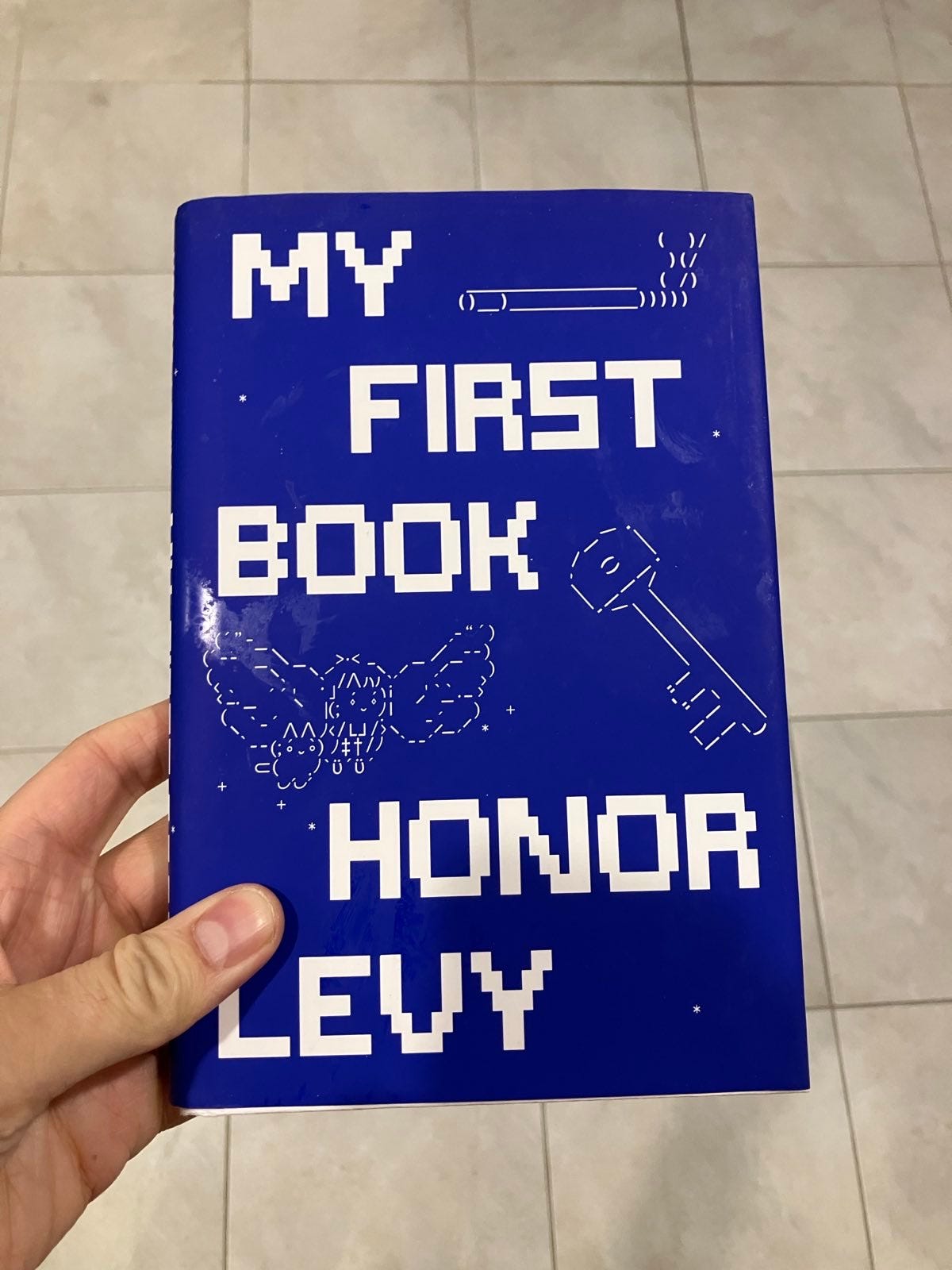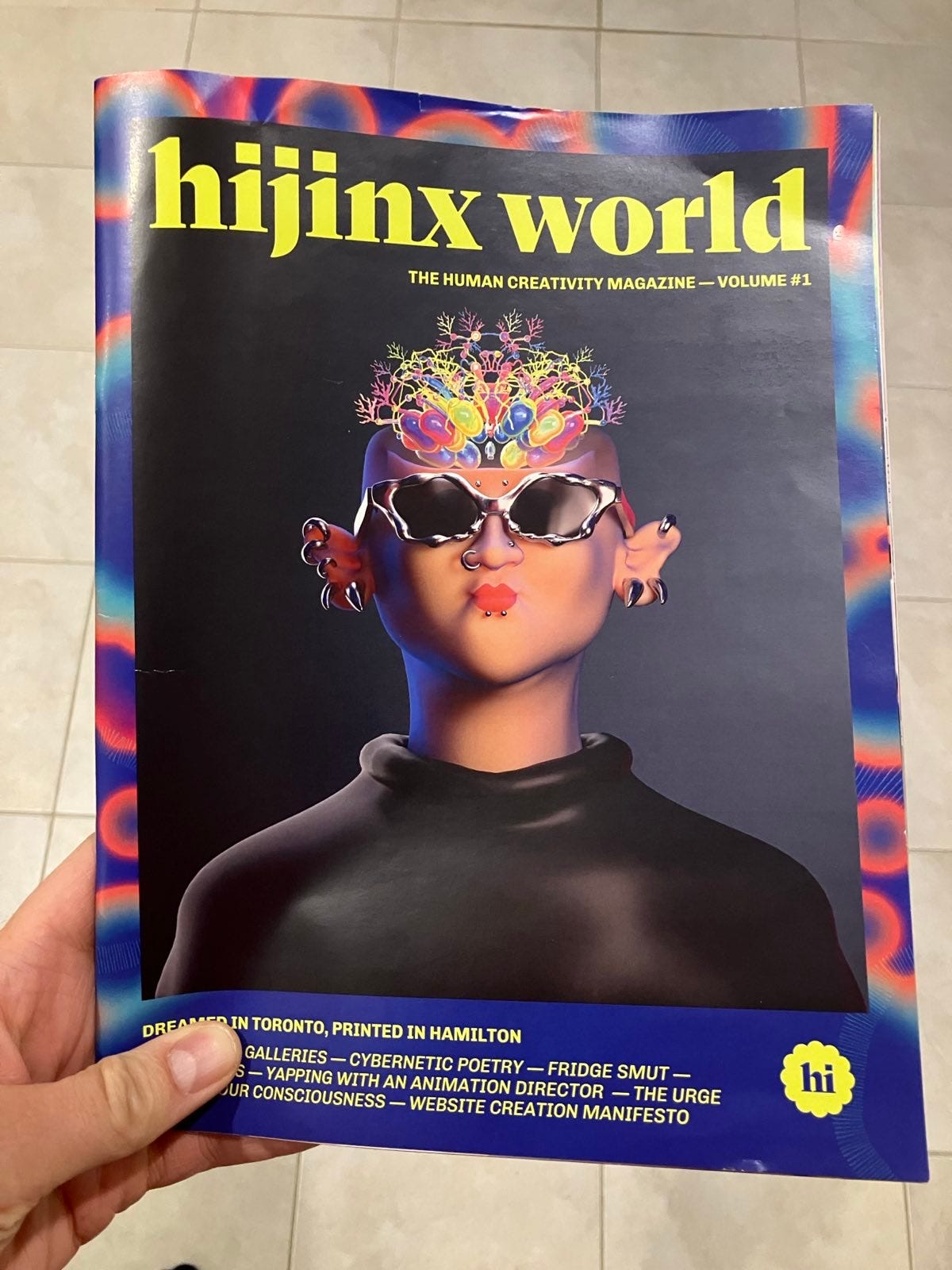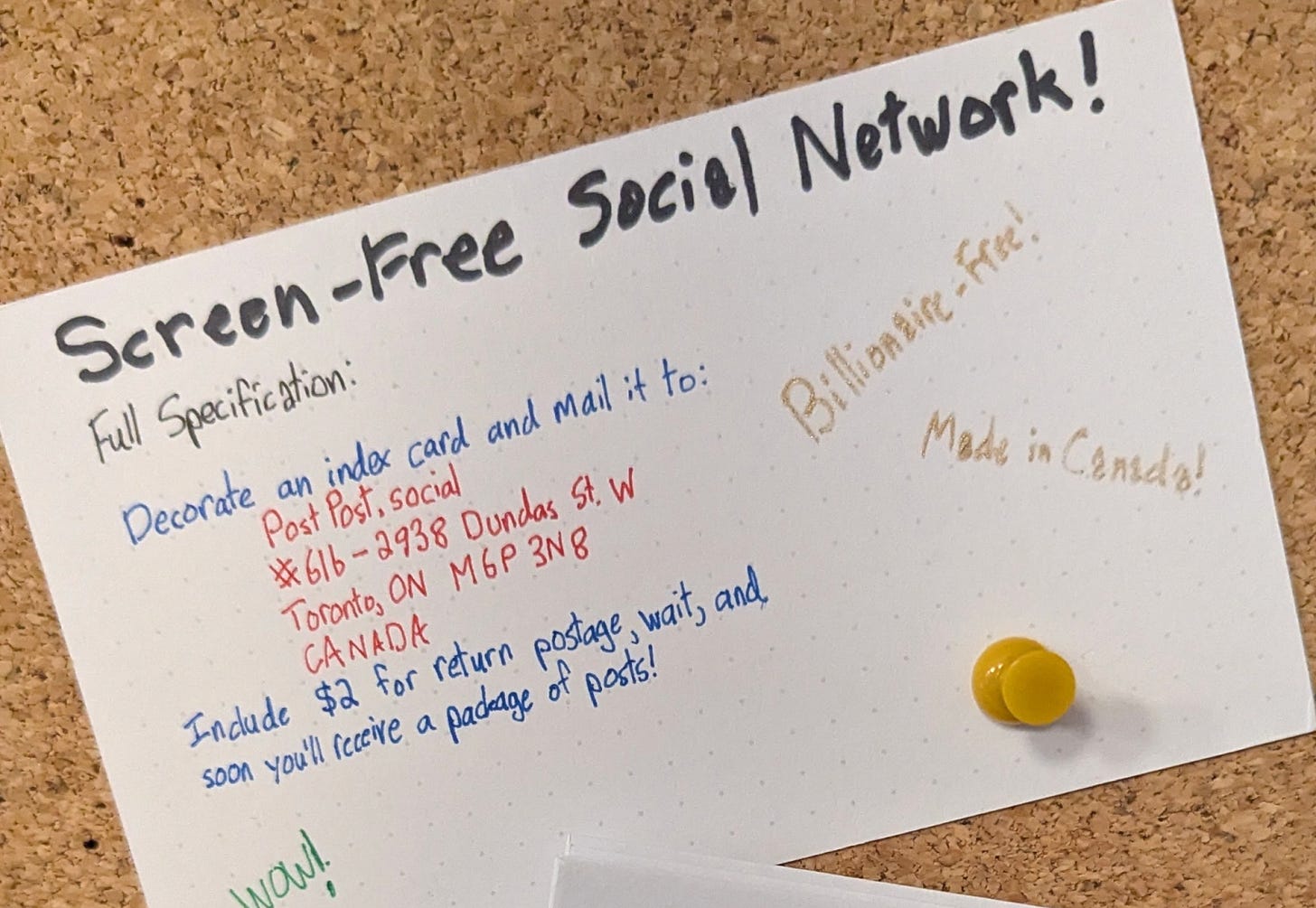What Comes After Internet Pessimism?
sign-up please :-)
Join us for Internet Real Life (IRL)—an innovative course (and maybe an emerging digital artistic collective?) where we uncover a new philosophy of the internet, and then create it together. It’s a month-long journey with some of the most interesting voices shaping internet culture today—accessible for just $40.
Starts this Friday, April 4th at 12 PM Eastern. Two hours. Second hour not recorded. Held on Zoom.
Written by Peter Limberg of Less Foolish
“Peter! All these doom proclamations about the internet are demoralizing, self-prophesying, boring. Let’s save the internet.”
While not her exact words, they capture the essence of what Katherine Dee, internet ethnographer extraordinaire, expressed to me last year.
Upon receiving this call to arms from Katherine, we joined forces and embarked on a journey to help the internet move beyond the era of internet pessimism (mid-2010s–early 2020s)—the doomers, the blackpillers, the defeatists who have the intelligence to point out what’s wrong but lack the creativity to show us what could be right.
Nor do we want to see a reversion to internet optimism (1990s–early 2000s), where we naively ignore the forebodings of the pessimists, giddily accelerate toward a technophilic promised land, and digitize our souls in the process.
That’s not right either. Something new is needed. Something more real.
A common refrain we heard from people following our respective work: “I once escaped real life by going on the internet. Now I’m trying to get back to real life to escape the internet.”
The challenge? There’s nowhere to escape to. The internet is too ubiquitous now—embedded in both our professional and personal lives.
The internet is real life.
Enter Internet Real Life (IRL)—a new philosophical stance that takes the best of the optimists and pessimists while leaving behind their shortcomings. An internet realism now awaits us: new visioning, new relating, new being—together, less foolishly.
While we have informed opinions, Katherine and I don’t claim to be experts on what internet realism will ultimately look like. So, we extended the call to arms to our audiences—prototyping an “inverse course”: a series of interviews followed by collective dialogues to tap into shared wisdom.
In November 2024, we spoke with the who’s who of intellectual hipsters making sense of the internet—Jreg, Ruby Justice Thelot, Honor Levy, and Reggie James—to further this emerging philosophy. It was a wonderful series, which we've just released in full on The Stoa’s YouTube channel, beginning with an opening from Kat and me on the dialectic driving the series.
Starting this Friday, for the month of April, Katherine and I are back with another stellar lineup, and we’re extending our call to arms to you.
You, who sense the internet can be created anew. You, who are called to think and make with others. You, who have the innate creative impulse to help us break out of the prison of rationalist knowings (whether flavored with optimism or pessimism).
You can sign up via the Metalabel page, which contains more information about April’s IRL experience starting this Friday.
I’ll share more thoughts on season two of IRL at the end of this entry, but first, let’s get you up to speed on what happened last November in season one and the four themes we explored.
Scenemaking
Our first guest was Greg Guevara, or Jreg, a Toronto-based YouTuber and artist known for his political satire and for engaging in irony (and post-irony, meta-irony, etc.) to the point where nobody can tell what he really believes, which is part of his art. More recently, he created the CCCRU, a YouTuber/artist studio in Toronto that weaves together online culture and IRL happenings.
In his presentation, Jreg told us how he created the CCCRU and answered our questions about how to maintain aliveness when being the source of a scene. I visited the CCCRU last summer and was impressed with the vibe. I sense that the model Jreg is experimenting with represents the future of culture: secret IRL gatherings that shape the spirit of the internet.
Like Dime Square and Vibecamp before them, the CCCRU consisted of extremely online people—burnt out from the existential loneliness of parasocial relating—who dared to cohere and create art in person. The CCCRU shows that we don’t have to “play that game”: sitting alone in our rooms, staring at screens, being either “content creators” or “content consumers,” and obsessing over likes and comments.
Internet Folk Artists
Our second guest was Ruby Justice Thelot, an adjunct professor of Design and Media Theory at New York University (NYU) and a “cyberethnographer” whose work focuses on the phenomenological implications of being online.
His presentation was a reading of an article he wrote for ARTnews, titled “The Internet Was the Beginning of a New Folk Artist. Artificial Intelligence May Be Its End.” In this piece, Ruby argues that internet content creators are the new folk artists. Like traditional folk artists, who created by hand for the communities they lived in, internet folk artists create—by “finger”—digital archifacts for their online communities and the wider scenes they’re embedded in. Both kinds of folk artists create for passion, not profit.
However, the new folk artist is under threat: with forces like generative AI, audience capture, and the various incentives of the attention economy, values are being pushed away from authentic expression toward metric-chasing and attentional clout. To avoid the death of the internet folk artist, Ruby concludes, new forms of creative resistance are needed.
Second-Selfing
Our next guest was Honor Levy, a writer and rising literary figure whose work explores the online realities of Gen Z. Her first book, My First Book, contains (possibly) autobiographical stories about the existential issues that come from growing up in the “internet generation.”
In her IRL session, Honor engaged in a book reading and discussed the performance of being online, and what happens when one begins to self-mythologize on the internet. Essentially, the mask begins to eat the face, hence the title we gave the session: Be careful who you pretend to be.
The risks of creating a “digital self,” or what sociologist Sherry Turkle calls a “second self”—an online avatar that anyone with an internet connection can parasocially interact with, including gatekeepers from legacy media—constitute a phenomenon that deserves further consideration.
An open question from this session: What happens when an internet folk artist turns their second self into a work of art?
Spiritual Technology
Our last session was with Reggie James, an up-and-coming writer and product architect who is a Forbes 30 Under 30 honoree. Reggie’s work, which can be found on the Substack ProductLost, investigates the cultural and spiritual sides of technology.
His presentation was the perfect one to close with. Reggie contrasts spiritual technology with secular technology ("SecuTech"), the dominant mode of modern technology, which is stripped of religion or any spiritual sensibilities. The concern is that the rationalist pursuit of a god-like AI through SecuTech leads to a soulless replacement for genuine spiritual connection.
Reggie concludes that spiritual technologies should honor the gifts of technological progress but use them to receive genuine spiritual insights, rather than the disspirited essence that SecuTech has seduced us with.
The Art of IRL
The series had a strong spiritual aspect to it, especially the non-recorded collective inquiries, which carried a spiritual essence in both content and vibe.
I think that’s just what happens when you put a bunch of artists or artistically inclined people in a Zoom room together. The creative spirit, when detached from undue capitalistic machinations, engenders affordances of what the new world might look like.
What’s interesting about the IRL experience is that it has led to real-life “IRL art” created by participants from the first season (around 50 people signed up for IRL1). For example, one participant, Toronto-based artist and 3D designer Liza Desya, created an “antimemetic” magazine (something that resists the memetic pull of the internet) called Hijinx World Magazine, featuring IRL-esque activities in and around Toronto.
In addition, another Toronto-based participant—artist and creative technologist Xavier Snelgrove—created a billionaire-free, screen-free social network called PostPost.Social.
What these IRL-inspired creations made me realize about the IRL experience is that it is not just an interview series or a course (or inverse course), but an art project from an emerging digital art commune, where our art is not something the internet houses, but where the internet itself becomes the art.
As philosopher Byung-Chul Han—”the Internet’s new favorite philosopher”—would say, art will be our saviour...
“I would entrust art with the task of developing a new way of life, a new [internet], a new narrative against the prevailing doctrine. As such, the saviour is not philosophy but art. Or I practise philosophy as art.” - Byung-Chul Han, “I Practise Philosophy as Art”
The philosophy of the internet is up for grabs, and we are entrusting the artists to go grab it.
IRL Season 2
With lessons learned from Season 1 in hand, Kat and I begin Season 2 this Friday, with further innovative experiments, inviting all philosopher-artists (aka, you!) to help us save the internet.
Each session is two hours, with the first hour consisting of a presentation from a guest, followed by a Q&A. Season Two guests include post-internet artist Molly Soda, internet folklorist Günseli Yalcinkaya, trend forecaster Sean Monahan, and antitech artist August Lamm.
Upon purchasing your ticket, you’ll receive a syllabus and a link to the Zoom room. Then, week by week, we’ll invite you to submit writing assignments (which you can post on your Substack) and encourage you to embrace the spirit of the course and begin treating the internet as your canvas.
There’s no pressure to read all the material or even attend every session. Even if you join just one, I imagine you’ll take something meaningful from the experience and connect with the philosopher-artists you’ve been longing to meet.







I really enjoyed your opening presentation for Internet Real Life. The idea of using the web as a "Tool" and it being its best when used as a blunt, knowing Tool is a very cogent one.
I've seen data floating around that teenagers were generally happier in the 00s than in the 2010s or 2025. We had access to the internet as a Tool and we would turn on and OFF when we needed it. Only the most hardcore could live fully online in 2006. When I turned on the dial-up internet to browse Green Day or Pokemon fan forums I was using the computer for a distinct purpose. I did my thing online and surfed the web. And then I turned it off.
Teenagers blended irl interactions with the internet all the time and almost as default, and the order and popularity of content was driven by human popularity, not by a black-box guessing what browsers wanted to see. MySpace was defined just as much by bathroom selfies and photos taken of Emos milling around in regional parks than a kind of Second Life type escapism. It was very meatspace with a distinct purpose, and in retrospect that was a good thing.
Not a philosopher or artist in the true sense but just signed up! Really hope I can make several of the sessions. I used to not work Fridays but just changed workdays.. so may be late or unable to make it some Fridays (based in the UK).